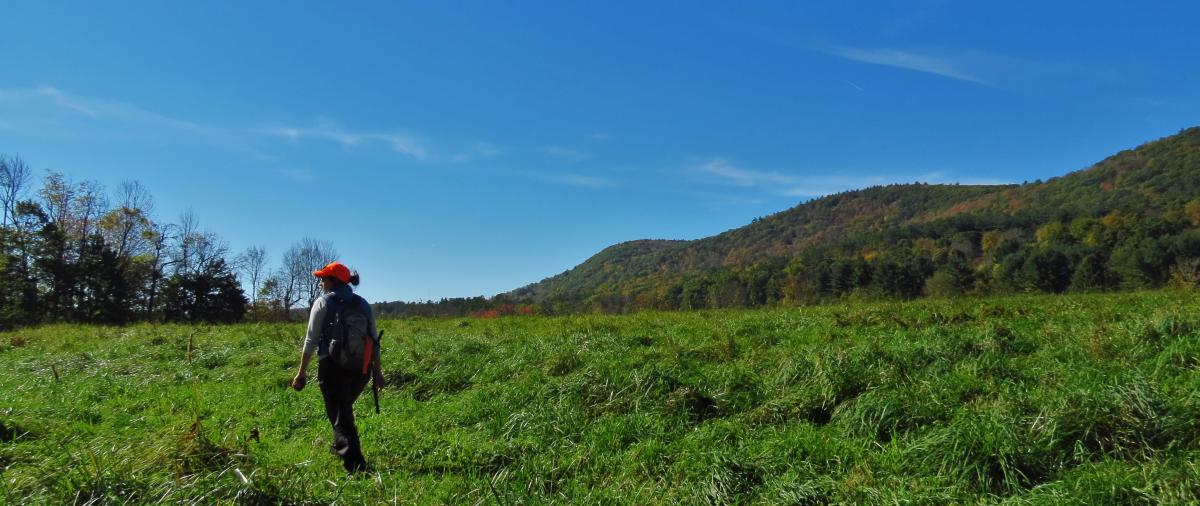Conservation Restrictions 101: The Rules on Conservation Restrictions on CPA Acquired Land
A Conservation Restriction (CR) is a legal agreement that prevents development and other activities on important natural and recreational resources like drinking water supplies, agricultural lands, wildlife habitat, and hiking trails. Although not as common, a CR can also be placed on active recreational land such as recreational fields and parks. A CR is a legal document, approved by the state’s Executive Office of Energy and Environmental Affairs (EEA) and filed at the Registry of Deeds, which details exactly what activities can and cannot take place on the parcel of land in question.
Are Conservation Restrictions required by CPA?
Yes -- Conservation Restrictions are required for all lands acquired with CPA funds for Open Space and Recreation; until this document is completed and filed, the terms of the CPA acquisition have not been technically completed. Ideally the CR should be filed immediately after the purchase (along with the deed to the property), but the CPA legislation does not have a specific time requirement for completing CRs. As a result, this step is often completed as soon as possible after a community has closed on a CPA acquisition.
Section 12a of the CPA legislation details the requirement for CRs:
Section 12. (a) A real property interest that is acquired with monies from the Community Preservation Fund shall be bound by a permanent restriction, recorded as a separate instrument, that meets the requirements of sections 31 to 33, inclusive, of chapter 184 limiting the use of the interest to the purpose for which it was acquired.
Can a municipality own both the land and the Conservation Restriction?
Due to the common law "doctrine of merger," separate legal entities must hold the fee in the land and the conservation restriction. So, if the city or town will own the land being acquired with CPA funds, a separate governmental organization or qualified third party will need to hold the CR, such as a nonprofit land trust, an athletic association, or a similar organization. The state’s EEA can provide details on which organizations are qualified to hold CRs. Basically to be qualified to hold a CR, an organization must (a) be authorized by their articles of incorporation to hold real property interests and (b) their purposes must include the conservation of land or water areas (or in the case of an active recreation CR, their purposes must include active recreation), and (c) they must be able to monitor and enforce the CR to ensure that its terms are not violated.
An organization that agrees to hold a Conservation Restriction has responsibilities to fulfill, such as monitoring the parcel to ensure it is used according to the terms of the CR. To cover those costs, many nonprofits will request payment of a one-time endowment to cover their future costs for holding the restriction. The amount will vary depending upon the situation. The good news is that Section 12a of the CPA legislation allows a municipality to use CPA funds to pay this one-time endowment - if the land was purchased with CPA funds.
This arrangement can also work in reverse; a land acquisitions is made by the third party, and CPA funds are used by the municipality to purchase and own the Conservation Restriction.
Is there guidance available to help write a Conservation Restriction?
The Executive Office of Energy and Environmental Affairs (EEA) wrote a model conservation restriction, which can easily be edited to adapt to the CR you are crafting. The Secretary of Energy and Environmental Affairs must approve conservation restrictions in order for certain legal protections to apply to their creation. EEA’s Director of Conservation Services is charged with making recommendations for approval, modification, or rejection of such requests to the Secretary.
Your first step is to prepare a draft of the CR, and submit it to the Director of Conservation Services for preliminary review, before proceeding with executing the document and seeking the necessary local approvals. This draft should be submitted with a Conservation Restriction Application form and a plan of the land in question. If available, or if you are unsure what environmental qualities the land has, a USGS topographical map of the area, and a ‘Field Report’ and information from Natural Heritage and Endangered Species is helpful. You will also need a ‘Municipal Certification’ filled out by your local Conservation Commission. If there are any mortgages or liens, including any construction loans, you must obtain a subordination from the leinholder which must be recorded with the CR.
June 2021

